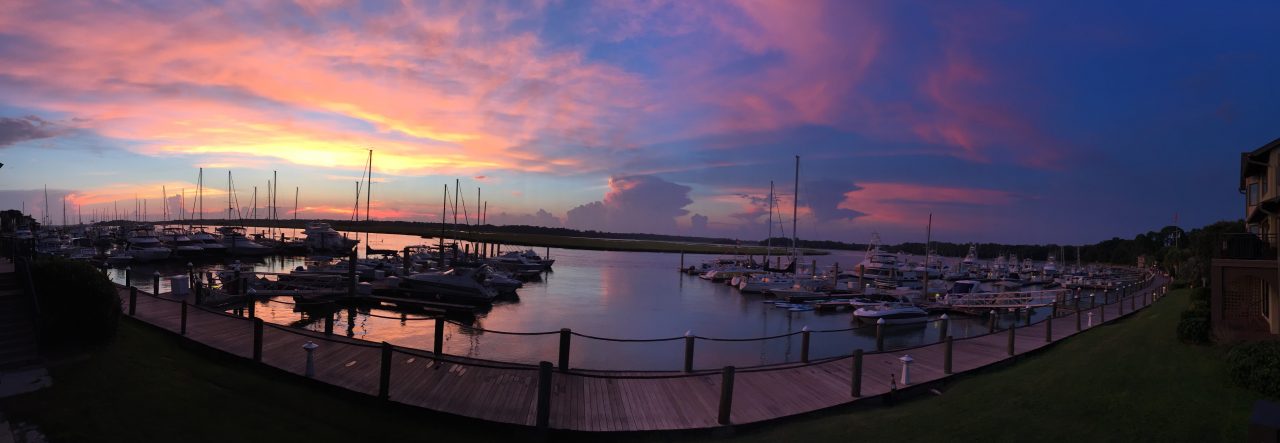Johns Island

Johns Island, also spelled John’s Island, is the largest island in the U.S. State of South Carolina. It is the fourth largest on the U.S. east coast, surpassed only by Long Island, Mt Desert Island, and Martha’s Vineyard. Johns Island is 84 square miles in area, with a population of 14,000 people. Johns Island was named after St. John’s Parish in Barbados by the first settlers to the island.
Colonial Era (1670-1776)
Johns Island was originally inhabited by nomadic tribes of Native Americans, such as the Kiawah, who survived off the land by hunting. By the time the Europeans arrived to the area, these tribes were already settled and farming off the land. The Native America tribes in this area also included the Stono and the Bohicket. The Stono Indians and the European settlers appeared to at first have good relations. However, after not understanding the concept of domesticated animals, the Stono killed some of the Europeans’ livestock, presuming that it was wild game. In retaliation of the killed livestock, the Europeans murdered several Indians.
Johns Island had scattered settlements that were situated near the water by the 1670s. Maps dated from 1695 and 1711 show many plantations established on the banks of the Stono River. During the colonial period, the main crop that was produced was Indigo, prized for its rich blue dye. The plantations that grew crops, including indigo, were supported by slave labor. The Stono Rebellion, which occurred on Johns Island in 1739, began as an attempt by a group of slaves to escape to Spanish Florida, where they were promised freedom. Beginning in the early morning hours of September 9th, 1739, a group of about twenty slaves met near the Stono River, led by a slave named Jemmy. The group then proceeded to the Stono Bridge and raided Hutchinson’s Store. They took food, ammunition, and supplies. The group of slaves then proceeded to kill the two shop keepers and leave their heads on the front steps of the store. The slaves then crossed the Stono River and proceeded to rally more as they began to walk to Spanish Florida. The slave group met with Lieutenant Governor William Bull and four of his comrades also traveling on the road. Seeing the situation at hand, Lieutenant Governor Bull and his companies rallied other plantation owners to help put down the opposition. The plantation owners attacked and put down the resistance and executed all who could not prove that they were forced to join the march.
American Revolution (1776-1785)
The American Revolutionary War arrived to Johns Island in May of 1779 with British troops arriving under the command of General Augustine Prevost. General Prevost established a small force to remain on the island, headed by Lieutenant Colonel John Maitland. Under the command of Sir Henry Clinton, more troops landed on Seabrook Island, beginning February 11th, 1780. Clinton’s goal was to cross Johns Island and James Island and lay siege to Charleston. His army crossed the Stono River and set up temporary headquarters at Fenwick Hall. Moving to James Island and then crossing the Ashley River to Charleston, Clinton was able to surround the city. Charleston surrendered to British forces on May 12th, 1780.
Civil War (1861-1865)
The Battle of Bloody Bridge, also known as Burden’s Causeway, took place on Johns Island in July 1864. The site of the battle is off of River Road, just north of the Charleston Executive Airport. On July 2nd 1864, Brigadier General John Hatch’s troops landed in the Legareville section of Johns Island. Hatch wanted to cross Johns Island and cross the Stono River in order to lay siege on James Island. The Union troops met the Confederate troops where the creek turns into swamp. Around 2,000 South Carolina soldiers held off a Union force of roughly 8,000 men. After three days of fighting, Hatch’s troops left the island.

